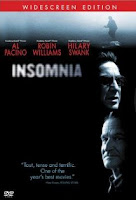this research on 'the Texas chainsaw massacre' will benefit me and our group immensely because of the different shot types, lighting ect. This will also help out the group so we know how to scare the audience.

The Texas Chain Saw Massacre is a 1974 American independent horror film directed by Tobe Hooper and written collaboratively by Hooper and Kim Henkel. The film stars Marilyn Burns, Gunnar Hansen, Teri McMinn, William Vail, Edwin Neal, and Paul A. Partain. While presented as a true story involving the ambush and murder of a group of friends on a road trip in rural Texas by a family of cannibals, the film is completely fictional. The Texas Chain Saw Massacre is the first of the six films in The Texas Chainsaw Massacre film franchise, which features Leatherface, a character modeled after the Wisconsin serial killer Ed Gein.
Hooper produced the film on an estimated budget of $140,000; he used a cast of relatively unknown actors, drawing people mainly from the areas surrounding the Texas filming locations. Principal photography for the film took place between July 15 and August 14, 1973. When the film was completed, Hooper struggled to find a distributor willing to release it due to its graphic depiction of violence; when he eventually secured a distributor, the Motion Picture Association of America gave the film an R-rating instead of the PG-rating Hooper had hoped.
Bryanston Distributing Company released The Texas Chain Saw Massacre to cinemas on October 1, 1974. Initially, the film drew a mixed reception from critics regarding the atmosphere, story, characters and graphic content, and the film was banned in many countries; nevertheless, it became a strong commercial success, grossing $30.8 million at the United States box office. Despite the lack of critical unanimity, The Texas Chain Saw Massacre has gained a reputation as one of the most influential horror films in cinema history. It originated several elements common in the slasher film genre, including the use of power tools as murder weapons and the characterization of the killer as a large, hulking and faceless figure.




